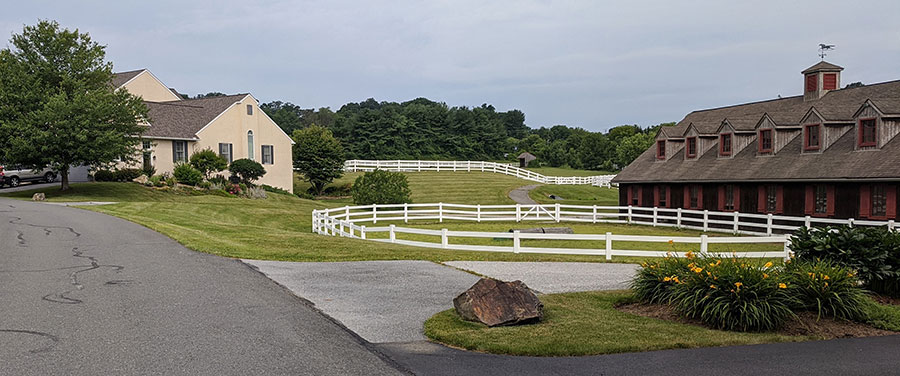Design Elements — Conservation Subdivisions as Agrihoods

Though not a true agrihood, the Weatherstone development in West Vincent is located next to a large community garden operated by a nearby church.
An agrihood is a master-planned residential community that centers around a working farm whose products support the residents of the community. Agrihoods are growing in popularity with growing interest in sustainable living, having a closer connection to where one's food comes from, and connecting with the land. Instead of (or in addition to) contracting out for landscaping services, agrihoods' community associations typically hire a farm manager to manage the farm and a Community Supported Agriculture (CSA) program whereby residents of the development can purchase shares of the farm's crops. Some agrihoods also have a commercial component including a farm-to-table restaurant and/or other compatible neighborhood services.
Ordinance Considerations
Although agrihoods attract residents who intentionally desire to live near agriculture, conflicts can still arise between these two uses, so buffering and potential restriction of certain high-intensity agricultural operations may be prudent. Because the agricultural operation will likely be the primary open space within the development, municipalities could consider waiving requirements for a certain amount of publicly accessible open space for this type of development.
A conservation subdivision that retains a portion of the land as active agriculture is not necessarily an agrihood. Agrihoods require a connection between the residents and the land being farmed, through shared ownership, management, and use of the farm products.

The Summerfield development in Elverson preserved a horse farm that is a centerpiece of the community.
Good Examples
Visit Agrihood Living for descriptions of successful Agrihood developments.

